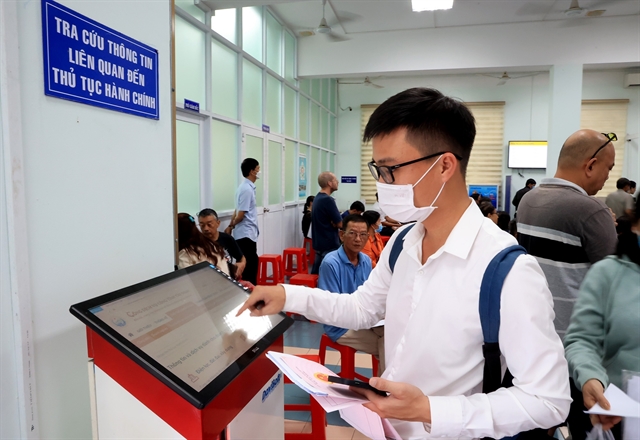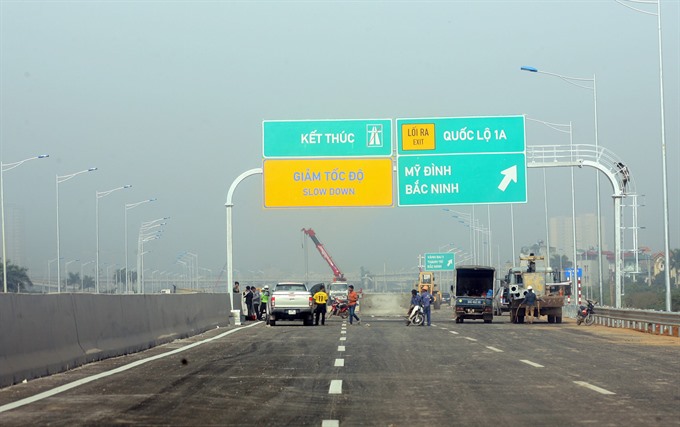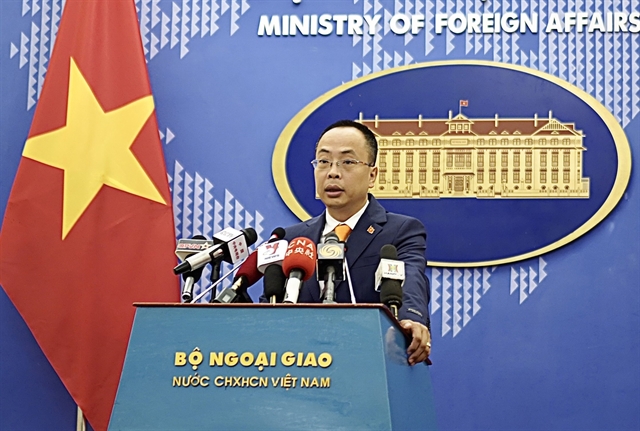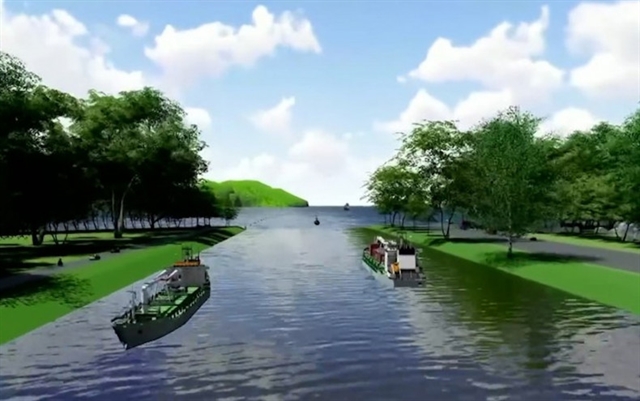 Society
Society

It has been three years but Ngô Văn Long still remembers exactly the day he had an accident on the Highway 6 as one of his most fearful memories in his life.
 |
The Hà Nội- Hải Phòng Highway. According to the National Traffic Safety Committee, 11,000-12,000 people are killed each year in traffic accidents, and nearly 50,000 injured victims need first aid fail to get it in time. — VNA/VNS Photo Huy Hùng |
HÀ NỘI – It has been three years but Ngô Văn Long still remembers the horrible day he had an accident on Highway 6.
Long, 40, from the northern province of Hòa Bình, broke his femur in the accident while driving his motorbike to Hà Nội.
“The injury wouldn’t have been so severe if I received proper first aid, but I couldn’t find any emergency station or someone to help me,” he said.
As he did not receive emergency aid, and was taken directly to the Hà Nội-based Việt Nam-Germany Hospital by some kind passers-by, his broken femur became serious.
“It took me four months to treat the injury with lots of pain, and more than a year for rehabilitation,” said Long.
Đỗ Trung Dũng, a doctor from the Việt Nam-Germany Hospital, said that the number of traffic accident victims from different provinces and cities in the hospital was always high, and many of them did not receive timely first aid.
“Many cases of light injury became severe injuries, or even die for broken bones because they suffered from blood loss and shock,” he said.
In fact, Dũng said other big hospitals in Hà Nội every day received many traffic accident victims from highways. They were almost in serious conditions because they had not received any emergency aid on the highways.
According to Dũng, many highways did not have emergency stations, or medical workers with experience in giving first aid.
Local communes had medical stations, but the stations were far from highways because they were in residential areas, and distances between different medical stations were uneven.
Medical stations often had few workers, with limited capacity of giving first aid, Dũng said
Statistics from the National Traffic Safety Committee showed that every year the country saw 11,000-12,000 fatalities from traffic accidents and nearly 50,000 injured victims needing first aid.
Improving the capacity of forces giving first aid along highways would help reduce 10 per cent of fatalities, equals about 1,000 victims, the statistics said.
Ineffective regulation
The MoH passed a circular in December last year dictating that there should be one emergency station at least every 50 kilometres of highway from the beginning of March 2017, but up to now the regulation has been ineffective.
Deputy Director of the Medical Services Administration Nguyễn Trọng Khoa said that the regulation did not mean that an emergency station should be built on the highway every 50km. The regulation meant that the emergency wards should be located in local medical stations where the highway passed, said Khoa.
Khoa explained that setting up emergency stations on highways would waste funds, because not many emergencies occurred. It would also waste human resources because when accidents did not occur, medical workers would be idle.
Under the circular, provinces and cities with highways must list medical stations which can give first aid to traffic accident victims and send the list to the MoH’s traffic operation centre. The centre will then assign medical stations to give emergency aids to the victims whenever accidents occur.
Earlier, director of the Medical Services Administration Lương Ngọc Khuê admitted that when an accident occurred on the highway, most patients did not receive timely first aid, affecting treatment results.
But health experts said that road investors had so far only paid attention to building roads and ignored other facilities, including emergency stations and rest stations.
Uông Đình Hòa, director of the Vietnam Expressway Operation and Maintenance Co Ltd (VEC O&M) told the Kinh tế đô thị (Economics and Urban Affairs) newspaper that Circular 49 regulated that emergency wards should be located in communes’ or districts’ medical stations, but many communes medical stations do not have ambulances, a requirement for many traffic accident patients.
Transport expert Đặng Chí Nga said that traffic accidents on highways were often serious so medical workers giving first aid must have experience, good equipment and special training.
“Can commune medical stations meet such demands?” he said.
Hòa suggested detailing the expenses for emergency stations.
Earlier, the VEC O&M was required to hire emergency centres for VNĐ25 million (US$1,100) per month. But under the MoH’s Circular 49, expenses will be paid by patients, making it difficult to keep emergency stations maintained because funds from the patients were not stable, the official said.
Director of the Medical Services Administration Khuê proposed assigning one ambulance to serve every three emergency stations, with the provincial emergency station responsible for operating the ambulances, to ensure they reach accident scenes within 10-15 minutes.
The country had 13 highways with a total length of 745km, eight others with length of 472km under construction and the country plans to build 21 more highways with length of 6,411km, according to the Directorate for Road of Việt Nam – VNS









